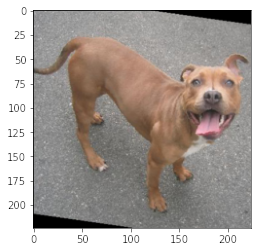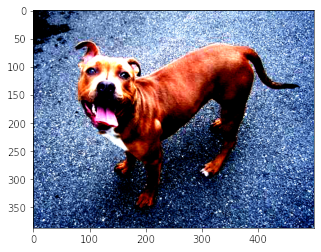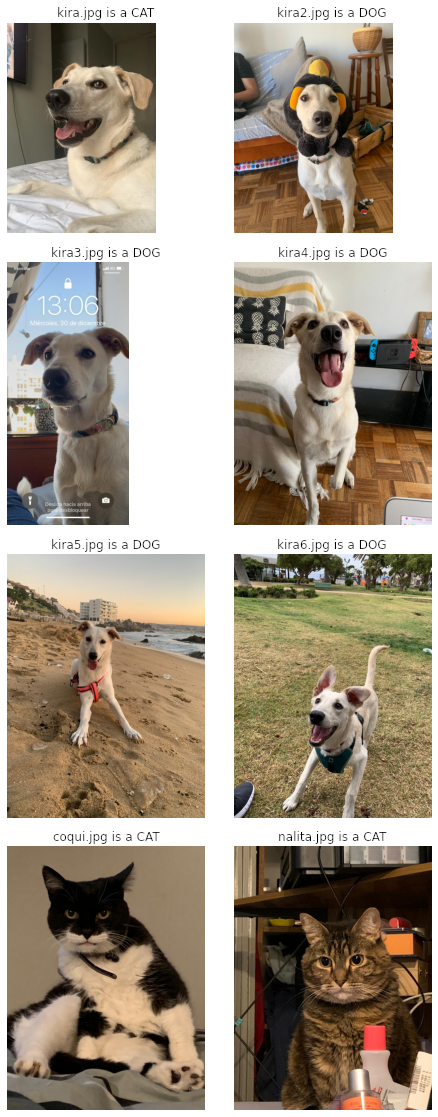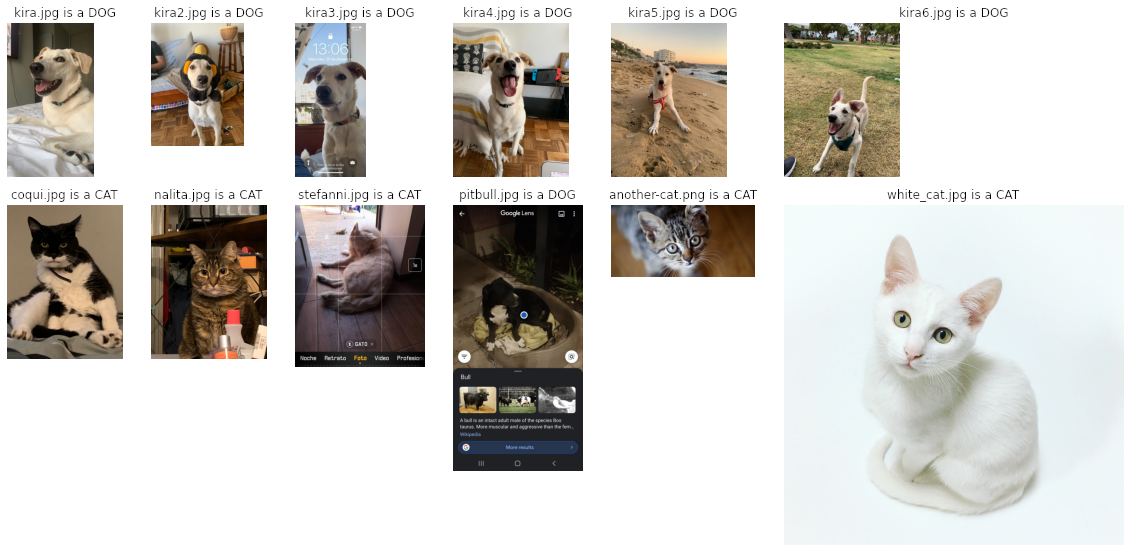import torch
import torch.nn as nn
import torch.nn.functional as F
from torch.utils.data import DataLoader
from torchvision import datasets, transforms, models
from torchvision.utils import make_grid
import numpy as np
import pandas as pd
import matplotlib.pyplot as plt
import os
from PIL import Image
from IPython.display import display
import glob
import warnings
warnings.filterwarnings('ignore')
Las imágenes de Gatos y Perros pueden obtenerlas del siguiente link: https://drive.google.com/file/d/1fuFurVV8rcrVTAFPjhQvzGLNdnTi1jWZ/view
with Image.open('CATS_DOGS/test/CAT/10107.jpg') as im:
display(im)

img_names = glob.glob('*/*/*/*.jpg')
len(img_names)
24994
%time
img_sizes = []
rejected = []
for item in img_names:
try:
with Image.open(item) as img:
img_sizes.append(img.size)
except:
rejected.append(item)
CPU times: user 2 µs, sys: 0 ns, total: 2 µs
Wall time: 3.58 µs
print(len(img_sizes))
print(len(rejected))
24994
0
img_sizes[:10]
[(500, 248),
(500, 332),
(500, 375),
(350, 374),
(500, 375),
(500, 375),
(243, 346),
(353, 467),
(500, 375),
(458, 415)]
df = pd.DataFrame(img_sizes, columns = ['width','height'])
df
| width | height | |
|---|---|---|
| 0 | 500 | 248 |
| 1 | 500 | 332 |
| 2 | 500 | 375 |
| 3 | 350 | 374 |
| 4 | 500 | 375 |
| ... | ... | ... |
| 24989 | 500 | 333 |
| 24990 | 500 | 423 |
| 24991 | 500 | 449 |
| 24992 | 500 | 375 |
| 24993 | 500 | 375 |
24994 rows × 2 columns
df.describe()
| width | height | |
|---|---|---|
| count | 24994.000000 | 24994.000000 |
| mean | 404.493518 | 361.037129 |
| std | 108.941802 | 96.936811 |
| min | 42.000000 | 33.000000 |
| 25% | 323.000000 | 302.000000 |
| 50% | 448.000000 | 375.000000 |
| 75% | 500.000000 | 421.000000 |
| max | 500.000000 | 500.000000 |
dog = Image.open('CATS_DOGS/train/DOG/14.jpg')
dog

dog.getpixel((0,0)) # it shows images are using 255 scale.
(90, 95, 98)
transform = transforms.Compose([
transforms.Resize((250)),
transforms.CenterCrop(250),
transforms.ToTensor(), #cast to tensor and normalize
])
im = transform(dog)
print(type(im))
print(im.shape)
<class 'torch.Tensor'>
torch.Size([3, 250, 250])
#matplotlib, height, width and channel
plt.imshow(np.transpose(im.numpy(), (1,2,0)));

transform = transforms.Compose([
transforms.RandomHorizontalFlip(p = 1),
transforms.RandomRotation(30),
transforms.Resize(224),
transforms.CenterCrop(224),
transforms.ToTensor()
])
im = transform(dog)
print(type(im))
print(im.shape)
#matplotlib, height, width and channel
plt.imshow(np.transpose(im.numpy(), (1,2,0)));
<class 'torch.Tensor'>
torch.Size([3, 224, 224])

transform = transforms.Compose([
transforms.ToTensor(),
transforms.Normalize(mean = [0.485,0.456,0.406], std = [0.229,0.224,0.225])
])
im = transform(dog)
print(type(im))
print(im.shape)
#matplotlib, height, width and channel
plt.imshow(np.transpose(im.numpy(), (1,2,0)))
Clipping input data to the valid range for imshow with RGB data ([0..1] for floats or [0..255] for integers).
<class 'torch.Tensor'>
torch.Size([3, 387, 500])
<matplotlib.image.AxesImage at 0x7fef0f71cd50>

Modelo
train_transform = transforms.Compose([
transforms.RandomRotation(10),
transforms.RandomHorizontalFlip(),
transforms.Resize(224),
transforms.CenterCrop(224),
transforms.ToTensor(),
transforms.Normalize([0.485,0.456,0.406],[0.229,0.224,0.225])
#normalización sugerida por torchvision para modelos pre-entrenados.
])
test_transform = transforms.Compose([
transforms.Resize(224),
transforms.CenterCrop(224),
transforms.ToTensor(),
transforms.Normalize([0.485,0.456,0.406],[0.229,0.224,0.225])
])
# Utility para importar imágenes desde carpetas
train_data = datasets.ImageFolder('CATS_DOGS/train', transform = train_transform)
test_data = datasets.ImageFolder('CATS_DOGS/test', transform = test_transform)
torch.manual_seed(42)
train_loader = DataLoader(train_data, batch_size = 100, pin_memory = True, num_workers = 12, shuffle = True)
test_loader = DataLoader(test_data, batch_size = 100, pin_memory = True, num_workers = 12, shuffle = False)
class_names = train_data.classes #obtenido directamente de las carpetas
class_names
['CAT', 'DOG']
print(len(train_data))
print(len(test_data))
18747
6251
for images, labels in train_loader:
break
images.shape
torch.Size([100, 3, 224, 224])
im = make_grid(images, nrow=5)
inv_normalize = transforms.Normalize(mean = [-0.485/0.229, -0.456/0.224, -0.406/0.225],
std = [1/0.229, 1/0.224, 1/0.225])
im_inv = inv_normalize(im)
plt.figure(figsize = (20,40))
plt.imshow(np.transpose(im_inv.numpy(),(1,2,0)))
plt.axis('off');

Arquitectura
class ConvolutionalNetwork(nn.Module):
def __init__(self):
super().__init__()
self.conv1 = nn.Conv2d(3, 6, 3, 1)
self.conv2 = nn.Conv2d(6, 16, 3,1)
self.fc1 = nn.Linear(54*54*16, 120)
self.fc2 = nn.Linear(120,84)
self.fc3 = nn.Linear(84,2)
def forward(self,x):
x = F.relu(self.conv1(x))
x = F.max_pool2d(x,2,2)
x = F.relu(self.conv2(x))
x = F.max_pool2d(x,2,2)
x = x.view(-1, 54*54*16)
x = F.relu(self.fc1(x))
x = F.relu(self.fc2(x))
x = self.fc3(x)
return F.log_softmax(x,dim=1)
torch.manual_seed(101)
device = torch.device('cuda' if torch.cuda.is_available() else 'cpu')
CNNmodel = ConvolutionalNetwork().to(device)
criterion = nn.CrossEntropyLoss()
optimizer = torch.optim.Adam(CNNmodel.parameters(), lr = 0.001)
CNNmodel
ConvolutionalNetwork(
(conv1): Conv2d(3, 6, kernel_size=(3, 3), stride=(1, 1))
(conv2): Conv2d(6, 16, kernel_size=(3, 3), stride=(1, 1))
(fc1): Linear(in_features=46656, out_features=120, bias=True)
(fc2): Linear(in_features=120, out_features=84, bias=True)
(fc3): Linear(in_features=84, out_features=2, bias=True)
)
con = 0
for p in CNNmodel.parameters():
con += p.numel()
con
5610222
Training
import time
start_time = time.time()
epochs = 3
max_trn_batch = 800
max_tst_batch = 300
train_losses = []
test_losses = []
train_correct = []
test_correct = []
for e in range(epochs):
trn_corr = 0
tst_corr = 0
for b, (X_train, y_train) in enumerate(train_loader):
b += 1
x,y = X_train.to(device), y_train.to(device)
y_pred = CNNmodel(x)
loss = criterion(y_pred, y)
#arg max
predicted = torch.max(y_pred.data,1)[1]
optimizer.zero_grad()
loss.backward()
optimizer.step()
train_losses.append(loss)
train_correct.append(trn_corr)
with torch.no_grad():
for b, (X_test, y_test) in enumerate(test_loader):
x_t, y_t = X_test.to(device), y_test.to(device)
y_val = CNNmodel(x_t)
predicted = torch.max(y_pred.data,1)[1]
loss = criterion(y_val, y_t)
test_losses.append(loss)
test_correct.append(tst_corr)
#print(f'Epoch {e} Loss: {loss.item()}')
print(f'Epoch {e + 1}/{epochs}, Train Loss : {train_losses[e]}, Test Loss: {test_losses[e]}')
total_time = time.time()-start_time
print(f'Total Time: {total_time/60} minutes')
Epoch 1/3, Train Loss : 0.6994757056236267, Test Loss: 0.41201767325401306
Epoch 2/3, Train Loss : 0.3059247136116028, Test Loss: 0.37493208050727844
Epoch 3/3, Train Loss : 0.3059287965297699, Test Loss: 0.5692620277404785
Total Time: 0.6383750836054484 minutes
plt.plot(train_losses, label = 'training loss')
plt.plot(test_losses, label = 'validation loss')
plt.title('Loss at the end of each loss')
plt.legend()
test_load_all = DataLoader(test_data, batch_size = len(test_data), shuffle = False)
with torch.no_grad():
correct = 0
for X_test, y_test in test_load_all:
x_t, y_t = X_test.to(device), y_test.to(device)
y_val = CNNmodel(x_t)
predicted = torch.max(y_val, 1)[1]
correct += (predicted == y_t).sum()
correct.item()/len(test_data)
0.7859542473204287
# torch.save(CNNmodel.state_dict(),'cat_dog.pt') # this saves only weights and biases
# CNNmodel = ConvolutionalNetwork()
# CNNmodel.load_state_dict(torch.load('cat_dog.pt'))
# CNNmodel.to(device)
from mpl_toolkits.axes_grid1 import ImageGrid
def predict(model,image):
pic = test_transform(Image.open(image))
model.eval()
with torch.no_grad():
new_prediction = model(pic.view(1,3,224,224).to(device))
return class_names[new_prediction.argmax().item()]
def prediction_grid(model, image):
fig = plt.figure(1, (20., 20.))
grid = ImageGrid(fig, 111,
nrows_ncols=(4, 2),
axes_pad=0.4,
)
for img, axes in zip(im_list,grid):
axes.set_title(f'{img} is a {predict(model,img)}', fontdict=None, loc='center', color = "k")
axes.axis('off')
axes.imshow(Image.open(img))
return plt.show()
im_list = ['kira.jpg','kira2.jpg','kira3.jpg','kira4.jpg','kira5.jpg','kira6.jpg','coqui.jpg','nalita.jpg']
prediction_grid(CNNmodel, im_list)

# new_model.load_state_dict(torch.load('cat_dog.pt'))
# new_model.eval()
Transfer Learning
AlexNetmodel = models.alexnet(pretrained=True)
AlexNetmodel
AlexNet(
(features): Sequential(
(0): Conv2d(3, 64, kernel_size=(11, 11), stride=(4, 4), padding=(2, 2))
(1): ReLU(inplace=True)
(2): MaxPool2d(kernel_size=3, stride=2, padding=0, dilation=1, ceil_mode=False)
(3): Conv2d(64, 192, kernel_size=(5, 5), stride=(1, 1), padding=(2, 2))
(4): ReLU(inplace=True)
(5): MaxPool2d(kernel_size=3, stride=2, padding=0, dilation=1, ceil_mode=False)
(6): Conv2d(192, 384, kernel_size=(3, 3), stride=(1, 1), padding=(1, 1))
(7): ReLU(inplace=True)
(8): Conv2d(384, 256, kernel_size=(3, 3), stride=(1, 1), padding=(1, 1))
(9): ReLU(inplace=True)
(10): Conv2d(256, 256, kernel_size=(3, 3), stride=(1, 1), padding=(1, 1))
(11): ReLU(inplace=True)
(12): MaxPool2d(kernel_size=3, stride=2, padding=0, dilation=1, ceil_mode=False)
)
(avgpool): AdaptiveAvgPool2d(output_size=(6, 6))
(classifier): Sequential(
(0): Dropout(p=0.5, inplace=False)
(1): Linear(in_features=9216, out_features=4096, bias=True)
(2): ReLU(inplace=True)
(3): Dropout(p=0.5, inplace=False)
(4): Linear(in_features=4096, out_features=4096, bias=True)
(5): ReLU(inplace=True)
(6): Linear(in_features=4096, out_features=1000, bias=True)
)
)
for param in AlexNetmodel.parameters():
param.requires_grad = False
torch.manual_seed(42)
AlexNetmodel.classifier = nn.Sequential(nn.Linear(9216, 1024),
nn.ReLU(),
nn.Dropout(0.4),
nn.Linear(1024, 2),
nn.LogSoftmax(dim=1))
AlexNetmodel
AlexNet(
(features): Sequential(
(0): Conv2d(3, 64, kernel_size=(11, 11), stride=(4, 4), padding=(2, 2))
(1): ReLU(inplace=True)
(2): MaxPool2d(kernel_size=3, stride=2, padding=0, dilation=1, ceil_mode=False)
(3): Conv2d(64, 192, kernel_size=(5, 5), stride=(1, 1), padding=(2, 2))
(4): ReLU(inplace=True)
(5): MaxPool2d(kernel_size=3, stride=2, padding=0, dilation=1, ceil_mode=False)
(6): Conv2d(192, 384, kernel_size=(3, 3), stride=(1, 1), padding=(1, 1))
(7): ReLU(inplace=True)
(8): Conv2d(384, 256, kernel_size=(3, 3), stride=(1, 1), padding=(1, 1))
(9): ReLU(inplace=True)
(10): Conv2d(256, 256, kernel_size=(3, 3), stride=(1, 1), padding=(1, 1))
(11): ReLU(inplace=True)
(12): MaxPool2d(kernel_size=3, stride=2, padding=0, dilation=1, ceil_mode=False)
)
(avgpool): AdaptiveAvgPool2d(output_size=(6, 6))
(classifier): Sequential(
(0): Linear(in_features=9216, out_features=1024, bias=True)
(1): ReLU()
(2): Dropout(p=0.4, inplace=False)
(3): Linear(in_features=1024, out_features=2, bias=True)
(4): LogSoftmax(dim=1)
)
)
device = torch.device('cuda' if torch.cuda.is_available() else 'cpu')
AlexNetmodel = AlexNetmodel.to(device)
cont = 0
for param in AlexNetmodel.classifier.parameters():
print(param.numel())
cont += param.numel()
cont
9437184
1024
2048
2
9440258
criterion = nn.CrossEntropyLoss()
optimizer = torch.optim.Adam(AlexNetmodel.classifier.parameters(), lr = 0.001)
train_loader = DataLoader(train_data, batch_size = 10, pin_memory = True, shuffle = True)
test_loader = DataLoader(test_data, batch_size = 10, pin_memory = True, shuffle = False)
import time
start_time = time.time()
epochs = 3
max_trn_batch = 800
max_tst_batch = 300
train_losses = []
test_losses = []
train_correct = []
test_correct = []
for i in range(epochs):
trn_corr = 0
tst_corr = 0
# Run the training batches
for b, (X_train, y_train) in enumerate(train_loader):
# if b == max_trn_batch:
# break
b+=1
# Apply the model
x,y = X_train.to(device), y_train.to(device)
y_pred = AlexNetmodel(x)
loss = criterion(y_pred, y)
# Tally the number of correct predictions
predicted = torch.max(y_pred.data, 1)[1]
batch_corr = (predicted == y).sum()
trn_corr += batch_corr
# Update parameters
optimizer.zero_grad()
loss.backward()
optimizer.step()
# Print interim results
if b%200 == 0:
print(f'epoch: {i:2} batch: {b:4} [{10*b:6}/8000] loss: {loss.item():10.8f} \
accuracy: {trn_corr.item()*100/(10*b):7.3f}%')
train_losses.append(loss)
train_correct.append(trn_corr)
# Run the testing batches
with torch.no_grad():
for b, (X_test, y_test) in enumerate(test_loader):
# if b == max_tst_batch:
# break
x_t, y_t = X_test.to(device), y_test.to(device)
# Apply the model
y_val = AlexNetmodel(x_t)
# Tally the number of correct predictions
predicted = torch.max(y_val.data, 1)[1]
tst_corr += (predicted == y_t).sum()
loss = criterion(y_val, y_t)
test_losses.append(loss)
test_correct.append(tst_corr)
print(f'\nDuration: {time.time() - start_time:.0f} seconds') # print the time elapsed
epoch: 0 batch: 200 [ 2000/8000] loss: 0.12588477 accuracy: 89.500%
epoch: 0 batch: 400 [ 4000/8000] loss: 0.09032388 accuracy: 91.250%
epoch: 0 batch: 600 [ 6000/8000] loss: 0.26316878 accuracy: 91.900%
epoch: 0 batch: 800 [ 8000/8000] loss: 0.14361647 accuracy: 92.325%
epoch: 0 batch: 1000 [ 10000/8000] loss: 0.10198053 accuracy: 92.640%
epoch: 0 batch: 1200 [ 12000/8000] loss: 0.46762228 accuracy: 92.900%
epoch: 0 batch: 1400 [ 14000/8000] loss: 0.00291114 accuracy: 93.207%
epoch: 0 batch: 1600 [ 16000/8000] loss: 0.12340410 accuracy: 93.400%
epoch: 0 batch: 1800 [ 18000/8000] loss: 0.00000925 accuracy: 93.533%
epoch: 1 batch: 200 [ 2000/8000] loss: 0.38755649 accuracy: 94.750%
epoch: 1 batch: 400 [ 4000/8000] loss: 0.00076796 accuracy: 94.700%
epoch: 1 batch: 600 [ 6000/8000] loss: 0.06538789 accuracy: 94.417%
epoch: 1 batch: 800 [ 8000/8000] loss: 0.00010027 accuracy: 94.450%
epoch: 1 batch: 1000 [ 10000/8000] loss: 0.00033302 accuracy: 94.610%
epoch: 1 batch: 1200 [ 12000/8000] loss: 0.23096445 accuracy: 94.558%
epoch: 1 batch: 1400 [ 14000/8000] loss: 0.53282773 accuracy: 94.457%
epoch: 1 batch: 1600 [ 16000/8000] loss: 0.16338238 accuracy: 94.631%
epoch: 1 batch: 1800 [ 18000/8000] loss: 0.05234673 accuracy: 94.611%
epoch: 2 batch: 200 [ 2000/8000] loss: 0.05994357 accuracy: 95.400%
epoch: 2 batch: 400 [ 4000/8000] loss: 0.00032028 accuracy: 95.175%
epoch: 2 batch: 600 [ 6000/8000] loss: 0.00776298 accuracy: 95.050%
epoch: 2 batch: 800 [ 8000/8000] loss: 0.20413604 accuracy: 95.200%
epoch: 2 batch: 1000 [ 10000/8000] loss: 0.01127659 accuracy: 95.110%
epoch: 2 batch: 1200 [ 12000/8000] loss: 0.71031255 accuracy: 95.200%
epoch: 2 batch: 1400 [ 14000/8000] loss: 0.06394389 accuracy: 95.214%
epoch: 2 batch: 1600 [ 16000/8000] loss: 0.06476951 accuracy: 95.112%
epoch: 2 batch: 1800 [ 18000/8000] loss: 0.09471183 accuracy: 95.100%
Duration: 198 seconds
test_load_all = DataLoader(test_data, batch_size = len(test_data), shuffle = False)
with torch.no_grad():
correct = 0
for X_test, y_test in test_load_all:
x_t, y_t = X_test.to(device), y_test.to(device)
y_val = AlexNetmodel(x_t)
predicted = torch.max(y_val, 1)[1]
correct += (predicted == y_t).sum()
correct.item()/len(test_data)
0.9580867061270196
# torch.save(AlexNetmodel.state_dict(),'cat_dog_alex_3e.pt') # this saves only weights and biases
from mpl_toolkits.axes_grid1 import ImageGrid
def predict(model,image):
pic = test_transform(Image.open(image))
model.eval()
with torch.no_grad():
new_prediction = model(pic.view(1,3,224,224).to(device))
return class_names[new_prediction.argmax().item()]
def prediction_grid(model, image, r, c):
fig = plt.figure(1, (20., 20.))
grid = ImageGrid(fig, 111,
nrows_ncols=(r, c),
axes_pad=0.4,
)
for img, axes in zip(im_list,grid):
axes.set_title(f'{img} is a {predict(AlexNetmodel,img)}', fontdict=None, loc='center', color = "k")
axes.axis('off')
axes.imshow(Image.open(img))
return plt.show()
im_list = ['kira.jpg','kira2.jpg','kira3.jpg','kira4.jpg','kira5.jpg','kira6.jpg',
'coqui.jpg','nalita.jpg','stefanni.jpg','pitbull.jpg','another-cat.png','white_cat.jpg']
prediction_grid(AlexNetmodel, im_list,2,6)
